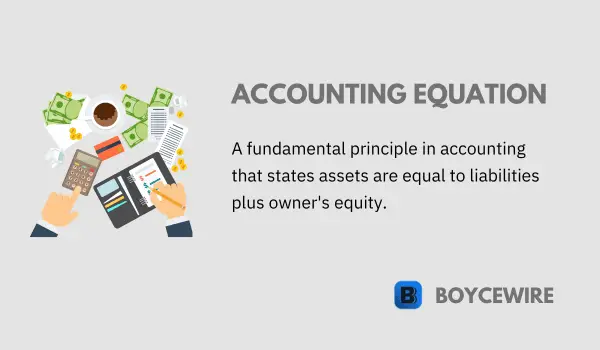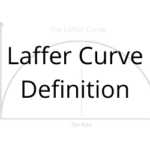Accounting Equation: Definition, Formula & Examples

What is the Accounting Equation?
The accounting equation, also known as the balance sheet equation, represents the relationship between the assets, liabilities, and equity of a business. It is the foundation of the double-entry bookkeeping system. Here is the basic form of this fundamental equation:
Assets = Liabilities + Equity
- Assets These are what a company owns or controls, such as cash, inventory, equipment, buildings, land, accounts receivable, and more.
- Liabilities These are the obligations or debts that a company owes to others, such as loans, accounts payable, wages payable, rent, utilities, taxes, and any other debts owed to creditors.
- Equity Also known as shareholders’ equity, owner’s equity, or net assets, equity represents the amount of money that would be returned to a company’s shareholders if all of the assets were liquidated and all of the company’s debts were paid off.
The accounting equation ensures that the company’s accounts are always in balance and that a company’s financial reports are always accurate. Any transaction that affects one side of the equation will also affect the other side to keep the equation in balance.
Key Points
- The accounting equation, also known as the balance sheet equation, states that assets are equal to liabilities plus owner’s equity.
- It provides the foundation for double-entry bookkeeping, ensuring that debits and credits are recorded accurately and that financial statements remain in balance.
- The equation helps track and analyze the financial position of a business, allowing for the assessment of solvency, profitability, and the sources of financing.
Understanding the Accounting Equation
At the heart of accounting lies a straightforward equation: Assets = Liabilities + Equity. This fundamental formula, known as the accounting equation, defines the relationship between a company’s resources (assets), its debts (liabilities), and the ownership interest in the company (equity).
Let’s break down the components:
- Assets These are resources owned by a company that are expected to provide future benefits. Assets can be tangible, like buildings, machinery, and cash, or intangible, like patents, trademarks, or goodwill.
- Liabilities These are obligations a company must fulfill, often involving the payment of cash or the provision of services to others. Liabilities might include loans, accounts payable, or salaries payable.
- Equity Also known as shareholders’ equity or owner’s equity, this represents the residual interest in the assets of the entity after deducting liabilities. In simpler terms, equity is what is left over for the owners if all assets were sold and all debts paid off. Components of equity may include common stock, retained earnings, and treasury stock.
In essence, the accounting equation shows that a company’s total assets are financed by either borrowing money (liabilities) or taking in money from owners (equity). The equation must always balance out, underlining the concept of the double-entry bookkeeping system – every debit must have a corresponding credit, and vice versa.
Principles and Assumptions of the Accounting Equation
The accounting equation stems from the double-entry bookkeeping system, a principle that mandates every financial transaction impact at least two accounts to maintain a balanced equation.
Here are the key principles and assumptions underpinning the accounting equation:
- The Double-Entry System This system requires every business transaction to be recorded in at least two accounts, ensuring the equation stays balanced. If a transaction increases one side of the equation, there should be a corresponding and equal increase on the other side.
- The Entity Assumption This assumes that the business entity, the owner, and the business’s transactions are separate. Even for sole proprietorships and partnerships, the business’s assets, liabilities, and equity are distinct from those of the owners.
- The Going Concern Assumption This premise suggests that the business will continue operating indefinitely. Assets are recorded at historical cost because we assume the business won’t be forced to liquidate in the near future.
- The Accounting Period Assumption This states that business activities can be sliced into short periods like months, quarters, or years, allowing for timely reporting.
- The Monetary Unit Assumption This principle assumes that all financial transactions and events can be expressed in terms of a stable currency.
In practice, maintaining the balance of the accounting equation may involve multiple accounts. For example, purchasing inventory on credit increases both the inventory account (an asset) and the accounts payable account (a liability). These principles ensure consistency and reliability in financial reporting, enabling stakeholders to make informed decisions.
Applying the Accounting Equation
Applying the accounting equation involves understanding how each business transaction affects the components of the equation. Here are some scenarios:
- Starting a Business When an owner invests money to start a business, the company’s assets (cash) increase, and simultaneously, the equity (owner’s equity or common stock) also increases. The accounting equation stays balanced.
- Acquiring Assets If a business purchases a piece of machinery on credit, it increases its assets (machinery) and also increases its liabilities (notes payable).
- Generating Revenues If a business earns revenue by selling goods, its assets increase due to the inflow of cash or increase in accounts receivable. At the same time, equity increases because earnings, a component of equity, rise.
- Incurring and Paying Expenses When a business incurs an expense, it decreases assets (cash or accounts payable increases) and decreases equity (because net income, part of equity, decreases). When the expense is paid, liabilities decrease along with assets.
- Borrowing Money When a company borrows from a bank, its assets (cash) and its liabilities (notes payable) increase.
- Paying Dividends Paying dividends reduces both assets (cash) and equity (retained earnings).
All financial transactions can be reflected in the accounting equation, and this balancing act is evident on a company’s balance sheet, where assets must equal the sum of liabilities and equity. Knowing how transactions affect the accounting equation helps in understanding and interpreting financial statements.
The Accounting Equation and Financial Statements
The accounting equation is foundational to the preparation and understanding of financial statements, particularly the balance sheet. Here is how the equation interacts with major financial statements:
- Balance Sheet The balance sheet is a direct embodiment of the accounting equation. It lists the company’s assets, liabilities, and equity at a specific point in time. The total assets always equal the total of liabilities and shareholders’ equity. This fundamental check ensures that the financial position of the company is accurately represented.
- Income Statement The accounting equation’s equity component is influenced by the income statement. The net income or loss for a specific period, calculated on the income statement, is added to or subtracted from the retained earnings (part of shareholders’ equity) on the balance sheet.
- Statement of Cash Flows Cash flow statements track the movement of cash, an essential asset in the accounting equation. It illustrates how cash levels have changed over an accounting period by documenting cash inflows and outflows from operating, investing, and financing activities.
- Statement of Changes in Equity This statement shows how the equity portion of the accounting equation has changed during the accounting period. Components include invested capital, retained earnings, dividends, and other comprehensive income.
Understanding how the accounting equation relates to financial statements can enhance the interpretation of these reports, leading to better decision-making for investors, creditors, and management.
How to Calculate the Accounting Equation
The basic accounting equation is a fundamental principle that keeps a company’s finances balanced. It is the cornerstone of the double-entry accounting system, which states that every financial transaction affects at least two accounts. The equation is:
Assets = Liabilities + EquityHere’s how you calculate it:
- Determine Assets Assets are everything that a company owns and can be converted into cash. This includes cash, accounts receivable, inventory, property, plant and equipment, and investments.
- Calculate Liabilities Liabilities are what a company owes to others. This includes accounts payable, salaries payable, loans, and bonds payable.
- Calculate Equity Equity, also referred to as shareholders’ equity or owner’s equity, is the amount of money that would be returned to a company’s shareholders if all the assets were liquidated and all the company’s debt was paid off. Equity is generally calculated as:
- Equity = Assets – Liabilities
- Or it can be broken down into:
- Equity = Beginning Equity + Investments by Owners + Revenue – Expenses – Distributions to Owners
Once you have determined the value of your assets, liabilities, and equity, you can check the balance of the equation:
If the value of Assets = Liabilities + Equity, your books are balanced.
This equation is always in balance because of the double-entry accounting method where every debit has a corresponding credit. Hence, every financial transaction affects at least two accounts keeping the equation in balance.
The accounting equation offers businesses a simple way to visualize their finances at a high level and serves as a basic error detection tool. If at any point the sum of debits does not equal the sum of credits, it may indicate a mistake has been made in the recording of financial transactions.
Examples of the Accounting Equation
Understanding the application of the basic accounting equation in real-world scenarios can aid in comprehending how various business activities affect a company’s financial position. Here are a few examples:
- Starting a Business Let’s say you start a business with $10,000 of your own money. Here’s how it would look:
Assets = Liabilities + Equity
$10,000 (cash) = $0 (no liabilities yet) + $10,000 (your initial investment counts as equity) - Taking a Business Loan If your business takes out a loan of $5,000 from the bank, the equation would be:
Assets = Liabilities + Equity
$15,000 (original $10,000 cash + $5,000 from loan) = $5,000 (loan liability) + $10,000 (your equity) - Buying Office Equipment If you decide to buy office equipment for $3,000, the equation would look like this:
Assets = Liabilities + Equity
$12,000 ($15,000 – $3,000 spent on equipment) = $5,000 (loan liability) + $10,000 (your equity)
The total value of assets still equals the sum of liabilities and equity, even though the form of the assets has changed. - Making a Sale If your business makes a sale and earns $2,000, the equation would now look like this:
Assets = Liabilities + Equity
$14,000 ($12,000 + $2,000 from the sale) = $5,000 (loan liability) + $11,000 (your equity, which now includes the $1,000 profit from the sale)
Through these examples, you can see how every financial transaction affects at least two accounts, always keeping the accounting equation in balance. This simple equation forms the foundation of double-entry bookkeeping, ensuring every debit has a corresponding credit.
FAQs
The accounting equation, also known as the balance sheet equation, is a fundamental principle in accounting that states that a company’s assets are equal to the sum of its liabilities and owner’s equity.
The accounting equation provides the basis for double-entry bookkeeping and ensures that the financial statements of a company remain in balance. It helps track and analyze the financial position of a business.
The equation states that assets, which represent what a company owns, are financed by either liabilities, which are the company’s obligations, or owner’s equity, which is the owner’s investment in the business.
The accounting equation can be used to analyze the financial health of a business, assess its solvency, evaluate the impact of transactions on the company’s balance sheet, and determine the sources of financing for assets.
About Paul
Paul Boyce is an economics editor with over 10 years experience in the industry. Currently working as a consultant within the financial services sector, Paul is the CEO and chief editor of BoyceWire. He has written publications for FEE, the Mises Institute, and many others.

Further Reading
 Reaganomics Definition - Reaganomics was an economic policy in the 1980s that aimed to stimulate economic growth and job creation by reducing taxes…
Reaganomics Definition - Reaganomics was an economic policy in the 1980s that aimed to stimulate economic growth and job creation by reducing taxes…  The Consequences of the Industrial Revolution - The consequences of the industrial revolution were far-reaching and included technological innovation, urbanization, labor exploitation, environmental degradation, social changes, and…
The Consequences of the Industrial Revolution - The consequences of the industrial revolution were far-reaching and included technological innovation, urbanization, labor exploitation, environmental degradation, social changes, and…  Laffer Curve: What it is, Diagram & Criticisms - The Laffer Curve demonstrates that at both 0 and 100 percent taxation, government revenues are equal to zero.
Laffer Curve: What it is, Diagram & Criticisms - The Laffer Curve demonstrates that at both 0 and 100 percent taxation, government revenues are equal to zero. 
